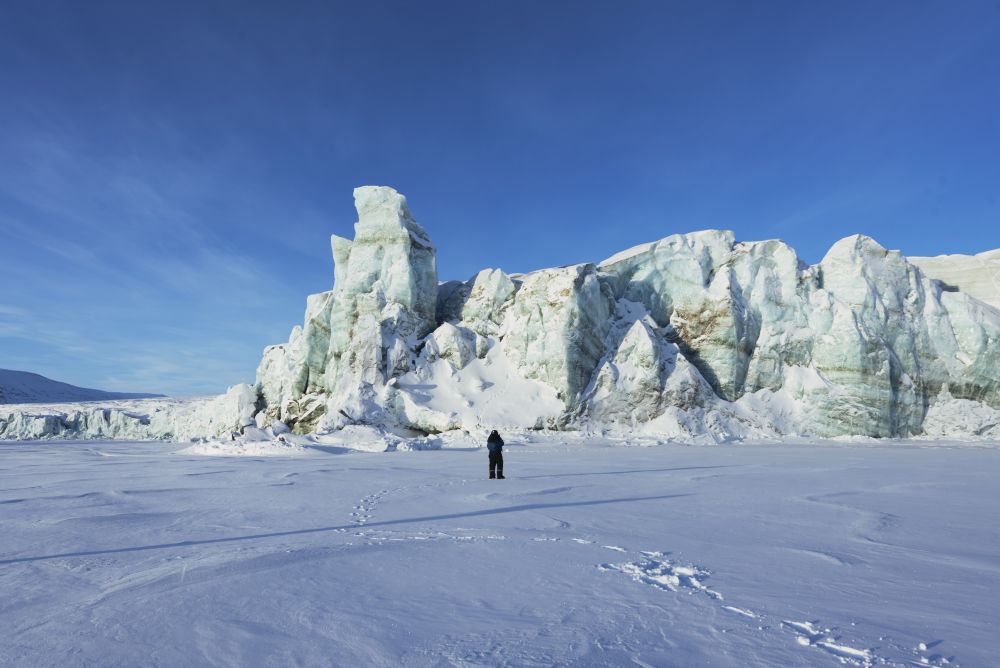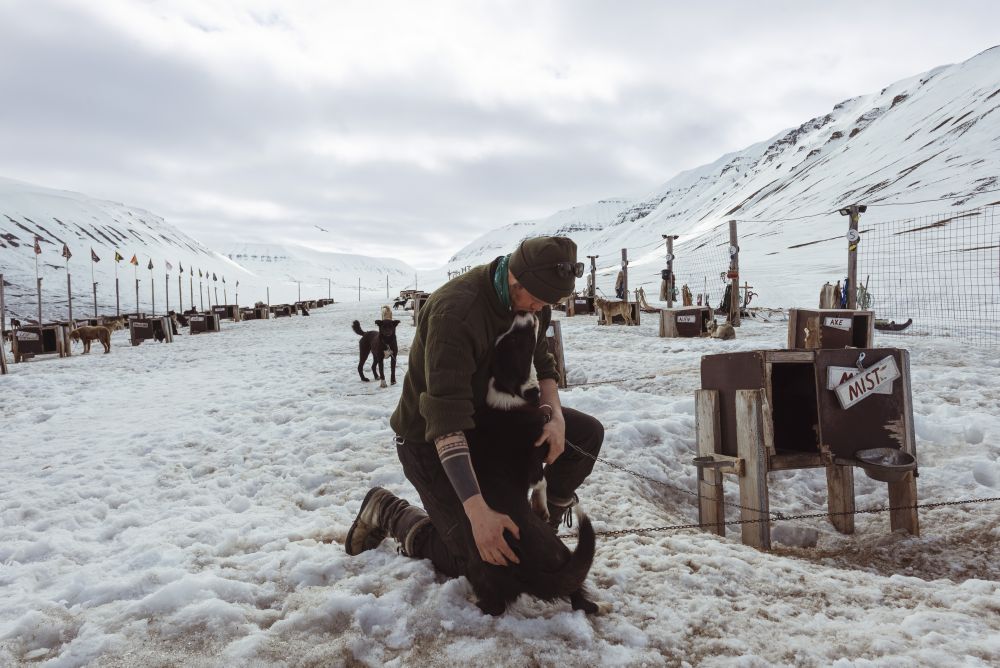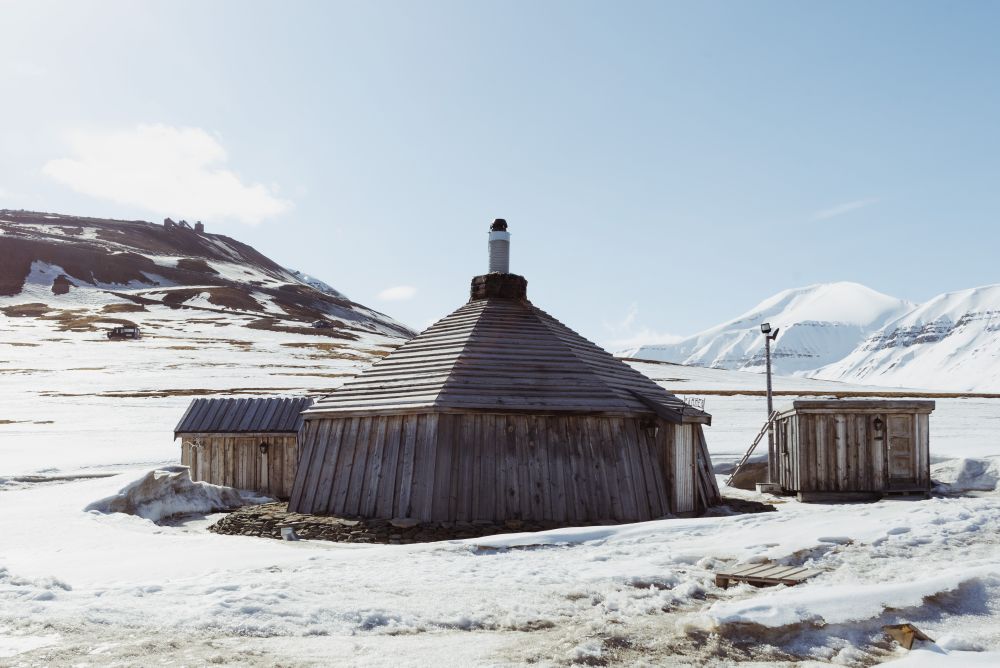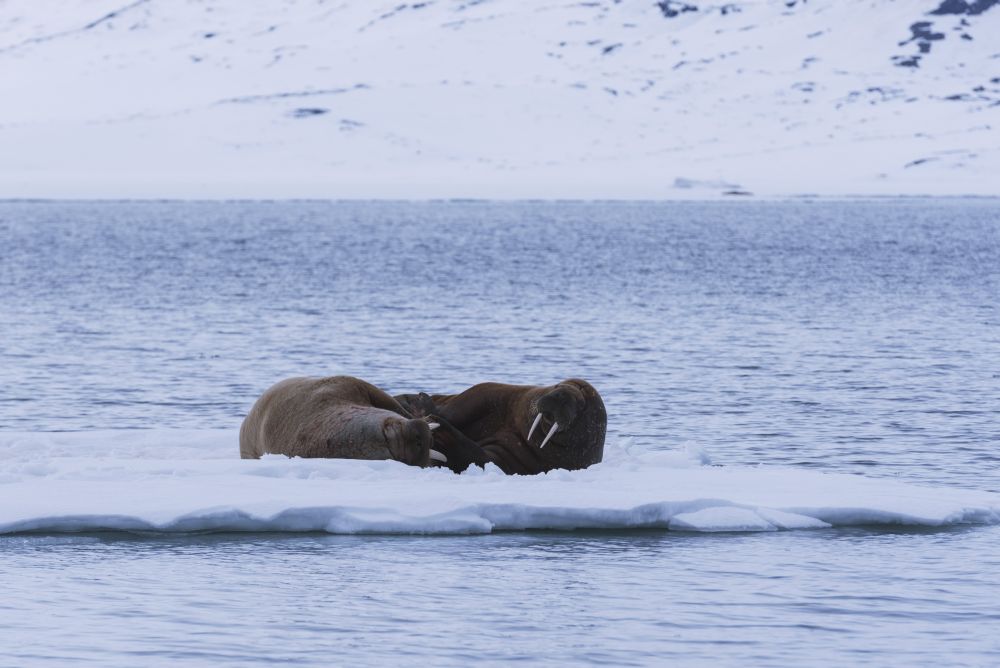Sugar Snow
Text and photos by Laura Marchini/Parallelozero
Sugar Snow
Text and photos by Laura Marchini/Parallelozero

The area of Mohnbukta Bay on Spitsbergen has many glaciers and is an ideal hunting territory for the numerous polar bears.
On the very edges of the map, between the 74th and 81st parallels, is a place that is both rugged and magical. Where daily life touches on the metaphysical: the Svalbard islands at the far north of Norway are the world's northernmost inhabited area.
The archipelago, the name of which is ancient Norwegian for "cold coast," is 60% covered by year-round ice. The tracks of the islands' few roads are altered almost daily by the extreme atmospheric conditions. The 2,600 or so human inhabitants are heavily outnumbered by the polar bear population, so no one ventures beyond the town unarmed.

Jan is 33 years old and comes from the Czech Republic. He has been in Svalbard for two years and works as a guide at Greendog Svalbard, a tour operator with more than 300 sled huskies. Before, he used to work in an office, but on a trip to Canada, he discovered a passion for huskies and decided to change profession and move to Northern Europe. Today he is very happy with his new life.
This place is home to a relatively small number of people who have chosen to live at the very edge of the world, either studying, working, or just pursuing their passions. It is also the site of some of the world's most advanced radar stations that analyse the phenomena of the magnetosphere, crucial for understanding our planet, and also, housed inside a kind of underground cathedral, examples of all the world's existing seeds are stored in a special location where they can survive forever.

Baretsz Hus is the home of Willeim Baretsz, who is credited with having discovered Svalbard. In 1596, he reached the island of Spitsbergen, and the Barents Sea is named after him. Historically, Svalbard represented a land of plenty, with its mineral resources, such as coal, and numerous opportunities for hunting bears, whales, walruses and seals. At the Baretsz Hus, in fact, various remnants of old bear traps can be found.
Longyearbyen is the main settlement, where 80% of the population live. Fifty different nationalities are represented, but no one was born here and no one can be buried here either. In fact, the law prohibits childbirth (the only healthcare structure is poorly equipped and women are sent to the mainland three weeks before their due dates) while, due to the layer of permafrost, the natural conditions mean that it is impossible to dig a grave to bury a coffin.
In these conditions, the inhabitants, who are forced together within the confines of the islands that they have chosen to call home for at least a period of their lives, deep down are unable to feel part of a community. Their relationships resemble what in Svalbard is known as "sugar snow": the snow that lies beneath the surface layer of ice and remains pure and flowery. Just like sugar, it is composed of infinite crystals that due to the extreme dry cold, are unable to form bonds with one another.

Walruses rest on floating ice in Svalbard, Norway. Among the most common animals on these islands, they are the main food source for the polar bears. As well as suffering from the effects of climate change, they are often disturbed by large ships carrying tourists.
Contact Us | Plan a Visit | Donate
8 Lide Road, Beitou 11259, Taipei, Taiwan
886-2-2898-9999
005741@daaitv.com
©Tzu Chi Culture and Communication Foundation
All rights reserved.
